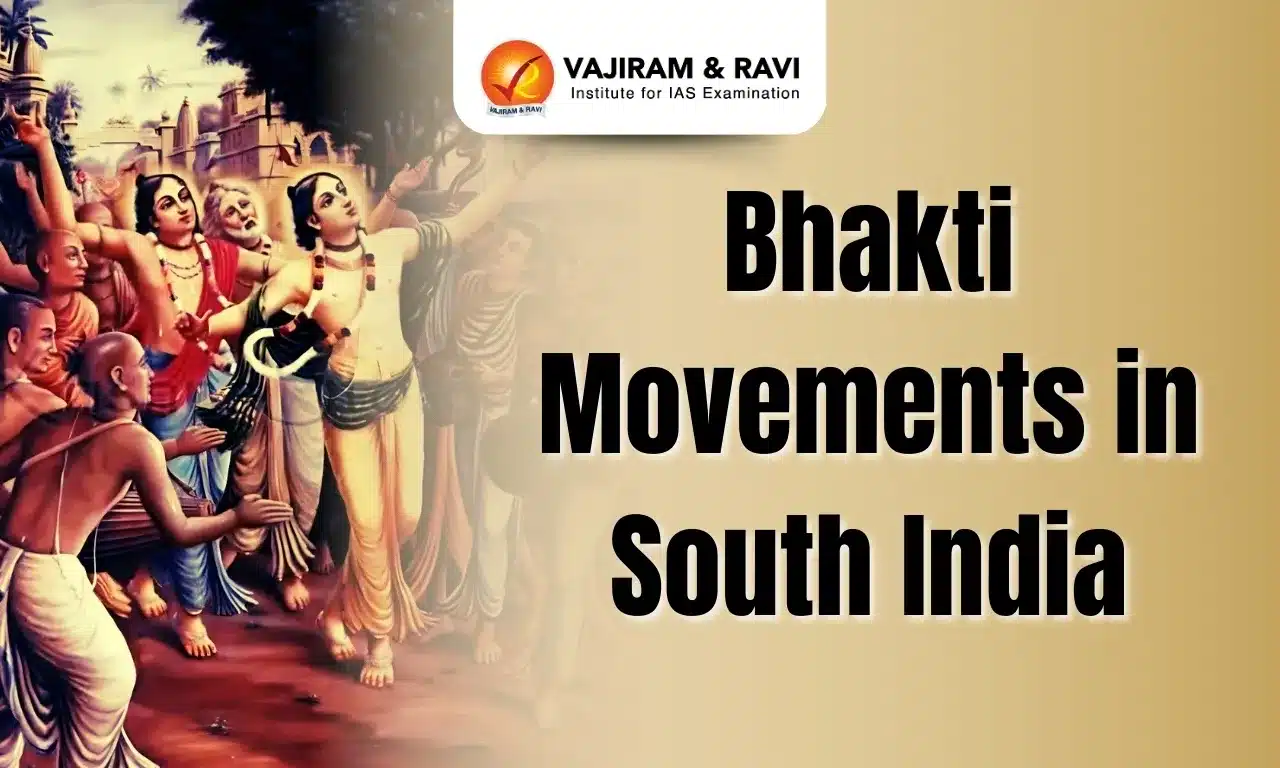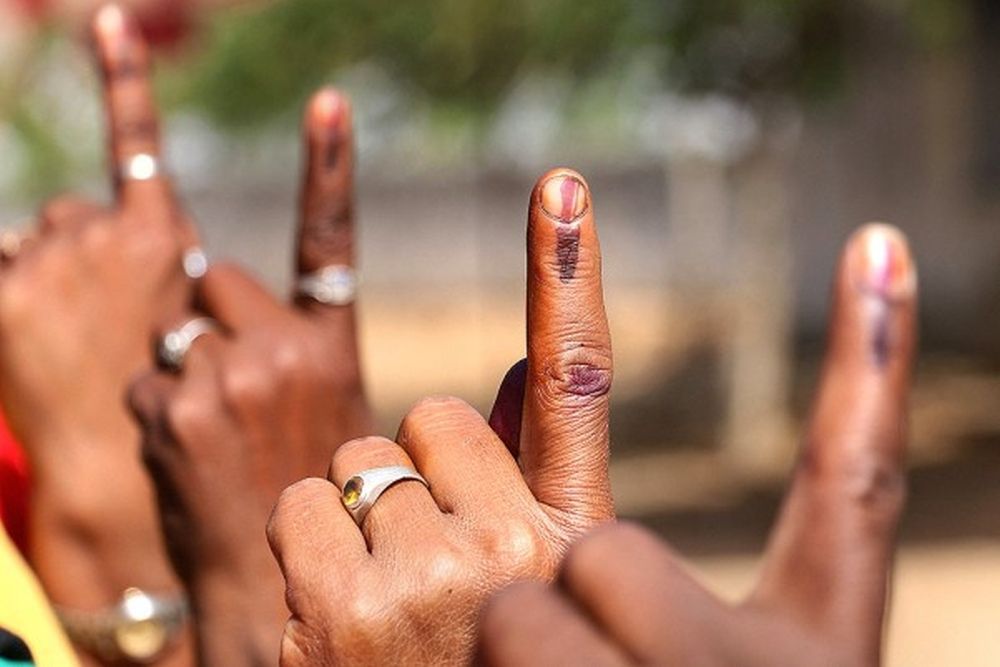The Emergence of Religious Movements in South India
The religious movements in South India emerged due to several political, socio-economic and religious factors.
- Jainism and Buddhism: The South Indian bhakti saints were critical of Buddhists and Jains who enjoyed a privileged status at the courts of South Indian kings at that time.
- Revivalism: The South Indian bhakti movement is considered the revivalism of Hinduism.
- Authority of Brahmanas: The poet-saints resisted the authority of the orthodox Brahmans by making bhakti accessible to all without any caste and sex discrimination.
- Rise of Vaishyas and Sudras: The growing classes of urban artisans were attracted to the religious movements because of their egalitarian ideas, as they were not satisfied with the low status in the traditional Brahmanical hierarchy.
- Simplicity: Most of the followers of religious movements were illiterate. Therefore, the language of Acharyas, other than Sanskrit, was simple to understand.
- Settled Population: From the sixth century onwards, expanding and integrating various peasant settlements in the river valleys and transforming the tribal population into settled peasant communities provided a base for new state systems.
Bhakti Movement in South India
As a religious concept, Bhakti means devotional surrender to a personally conceived Supreme God to attain salvation.
- Bhakti Movement had its genesis in southern India in the 7th and 12th centuries CE.
- Bhakti evolved from a religious tradition to a popular movement in South India. It was founded on ideas of religious equality and broad-based social justice.
- The origin of this doctrine has been traced to both the Brahmanical and Buddhist traditions of ancient India and various scriptures such as the Gita.
- The Shaiva Nayanar saints and Vaishnava Alvar saints of South India spread the doctrine of bhakti among different sections of the society irrespective of caste and sex during the period between the seventh and the tenth century.
- They disregarded the austerities preached by the Jains and the Buddhists and preached that personal devotion to god was the only means of salvation.
- The two main pillars of the bhakti tradition are ‘love’ and ‘meditation’. The love is for God, which is ecstatic in nature and symbolises a feeling of bliss or unparalleled happiness.
- The idea being conveyed here is to be lost in the love of God as though he were beloved.
- There are two kinds of meditation in bhakti, these are:
- Saguna bhakti: One meditates on God as a separate being through disciplined practices. According to it, God has a distinct form, character, and positive attributes and manifests himself in incarnations such as Rama and Krishna.
- Nirguna bhakti: God and self are merged, and little distinction is made between self and God.
Alvars
- It’s a personalised religious attitude that focuses on intense devotion to a single god, Vishnu.
- Alvars are twelve, including a woman saint,Andal.
- The hymns are collectively known as Nalayira Divya Prabandham (collection of 4000 Tamil verses).
- The Alvars condemned Nayanars in an attempt at the superiority of their God.
- Nammalvar, one of the Alvars (seventh century AD), developed the notion of prapatti, complete trust and surrender, to be developed in Srivaisnava theology from the twelfth century onwards.
- Some of the Alvars also used various images from day-to-day life and connected them to the various Vaishnava myths.
- For instance, Periyalvar (ninth century AD) extensively used the mother and child images connecting them to Yashoda and Krishna.
Nayanars
- It’s a personalised religious attitude that focuses on intense devotion to a single god, Shiva.
- Nayanars were also known as Samayacharyas and were sixty-three in number, including a woman saint Karaikkal Ammaiyar.
- The hymns are collectively known as Tevaram.
- The Nayanars condemned Alvars in an attempt to be superior to their God.
- The Nayanars conceptualised Shiva as the warrior god, fighting battles and warding away evils.
- The local roots of Shiva were highlighted by associating his achievements with specific sites, in this case, primarily the Kaveri valley, which was the centre of Chola power.
Themes of Bhakti in the Nayanar and Alvar Hymns
The hymns elaborated upon specific ideas which had never evolved earlier. These ideas became the basis for the future religious developments of both communities. These ideas were:
- A highly personalised religious attitude focused on an individual’s relationship with god.
- The hymns projected a strong sense of community. Both were addressing primarily a group of devotees and attempting to impress upon them through ideas of devotion.
- The hymns of the early saints reflected hostility towards the ritual dominance of the Vedic Brahmanas.
- The saints criticised this monopoly and strongly advocated for equality.
- However, not everyone completely rejected the caste system. The only place where we can find a direct rejection of caste is in the hymns of Tirunavukkaracar (Appar), a saint who followed the Shaiva tradition.
- The notion of pilgrimage further contributed to the sense of belonging to a community.
- The emergence of the local cult centres in the hymns charted out sacred geography for the community and marked the beginning of the concept of pilgrimage.
| Bhakti and South Indian Acharyas | |
| When the popularity of the bhakti movement in South India was on the wane, the doctrine of bhakti was defended at the philosophical level by a series of brilliant Vaishnava Brahman scholars (acharyas). Ramanujacharya and Madhavacharya played roles in the revival. | |
| Adi Shankaracharya | The person who made Vedic philosophy more popular was Adi Shankaracharya. He tried to give a new direction to Vedic philosophy with the help of an organisation known as Matha.
|
| Ramanujacharya (1017-1137) | He gave philosophical justification for bhakti. He tried to balance orthodox Brahmanism and popular bhakti, which was open to all.
|
| Madhavacharya | Madavacharya was a Vaishnavite Bhakti philosopher. Like Ramanuja. He did not dispute the orthodox Brahmanical restriction of the Vedic study.
|
Importance of Religious Movements in South India
- Spiritualism: It evoked shared religiosity, direct emotional and intellection of the divine, and the pursuit of spiritual ideas without the overhead of institutional superstructures.
- Right to preach: The Brahmans had to accept the right of the ‘low-caste’ to preach, to have access to bhakti as a mode of worship and even to the Vedas.
- Equality: The South Indian bhakti movement, in its heydays, succeeded in championing the cause of religious equality.
- Rise of saints: The bhakti movement in the south led to the rise of important saints like Adi Shankaracharya, Ramanujacharya and Madhavacharya and their philosophies.
- Spread of ideas: Eventually, the south Indian bhakti spread to various regions of India, awakening the masses and even changing its ideas like in monotheistic bhakti.
- Assimilation: After the movement reached its climax in the 10th century, it was gradually assimilated into the conventional Brahmanical religion.
Last updated on April, 2025
→ UPSC Notification 2025 was released on 22nd January 2025.
→ The UPSC Vacancy 2025 were released 1129, out of which 979 were for UPSC CSE and remaining 150 are for UPSC IFoS.
→ UPSC Admit Card 2025 is expected to release in first week of May for CSE Prelims Exam 2025.
→ The UPSC Prelims 2025 is scheduled to be conducted on 25th May 2025 and UPSC Mains 2025 will be conducted on 22nd August 2025.
→ Apply once through it and aspirants can apply for various government exams conducted by UPSC.
→ The UPSC Selection Process is of 3 stages-Prelims, Mains and Interview.
→ UPSC Result 2024 is released with latest UPSC Marksheet 2024. Check Now!
→ UPSC Toppers List 2024 is released now. Shakti Dubey is UPSC AIR 1 2024 Topper.
→ Also check Best IAS Coaching in Delhi
Bhakti Movements in South India FAQs
Q1. Under which dynasty Religious Movements flourished in India?+
Q2. What are the similarities between Bhakti and Sufi Movement?+
















